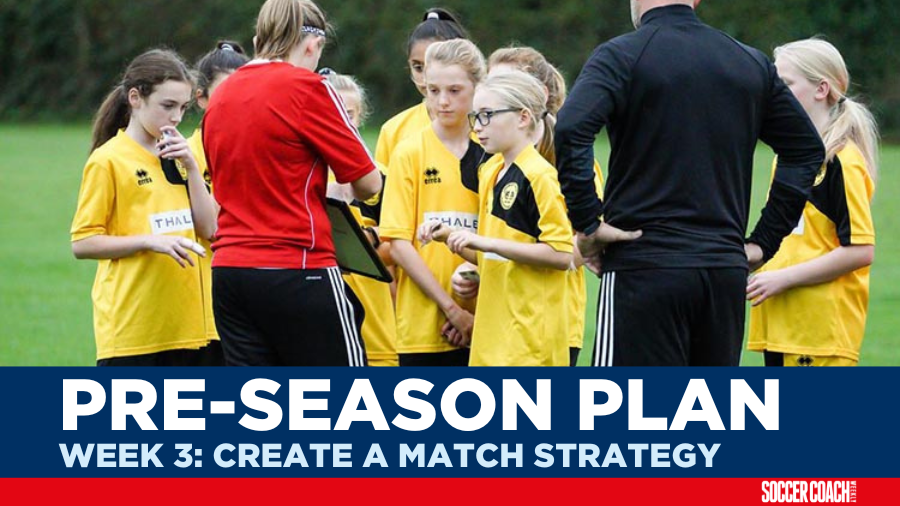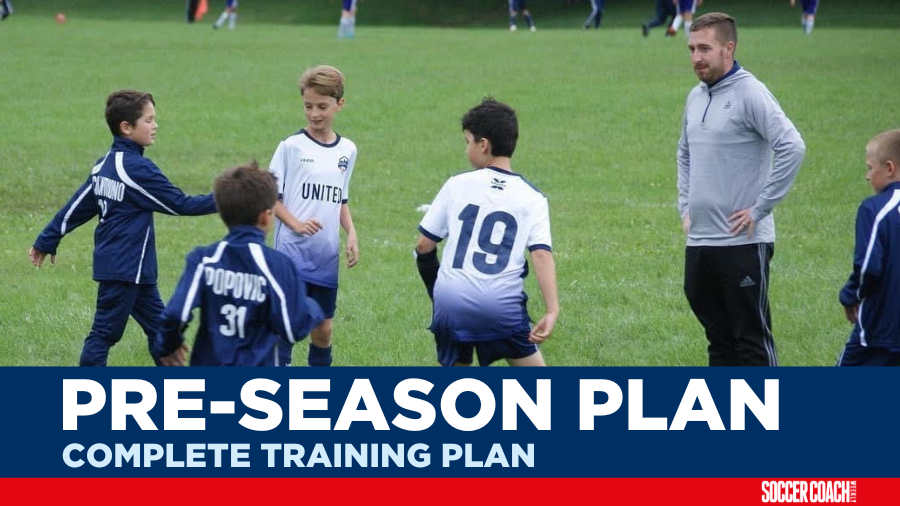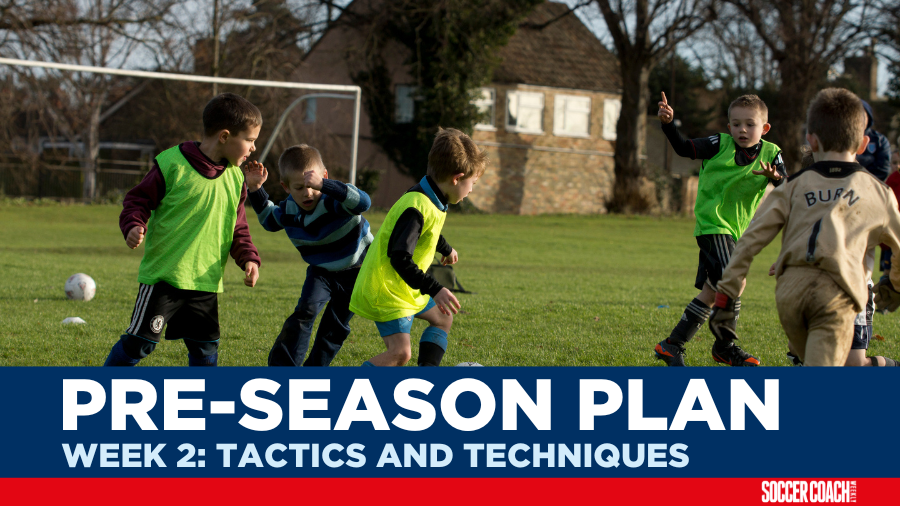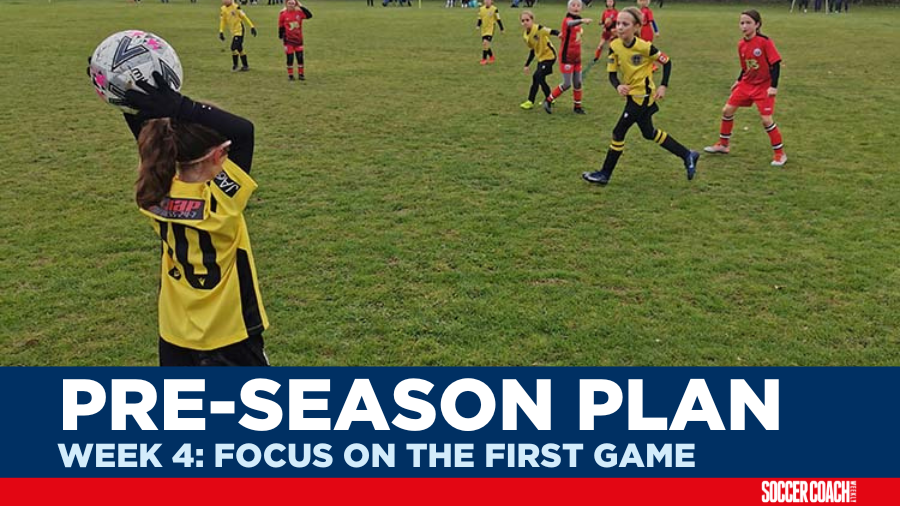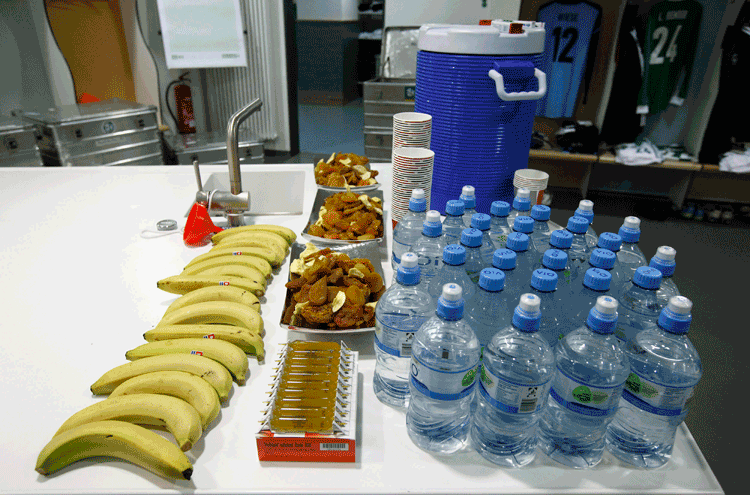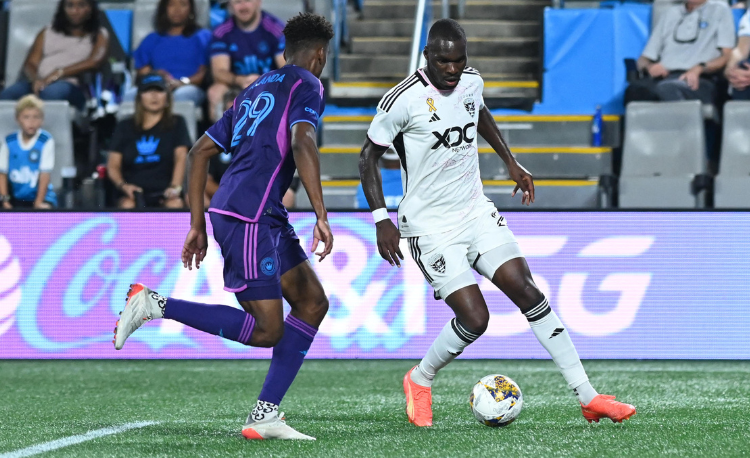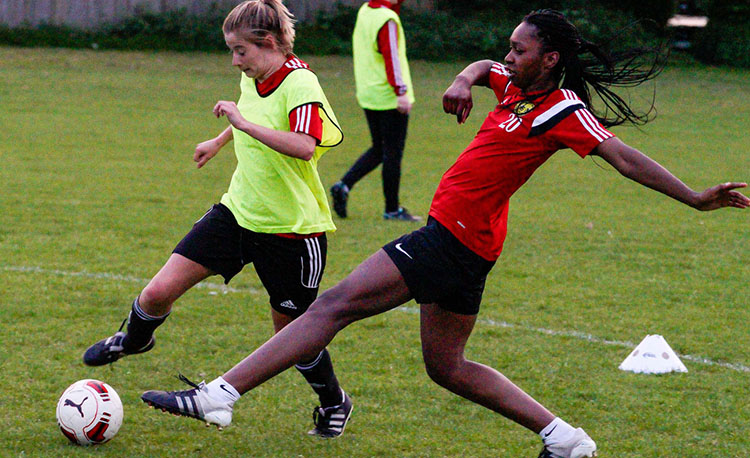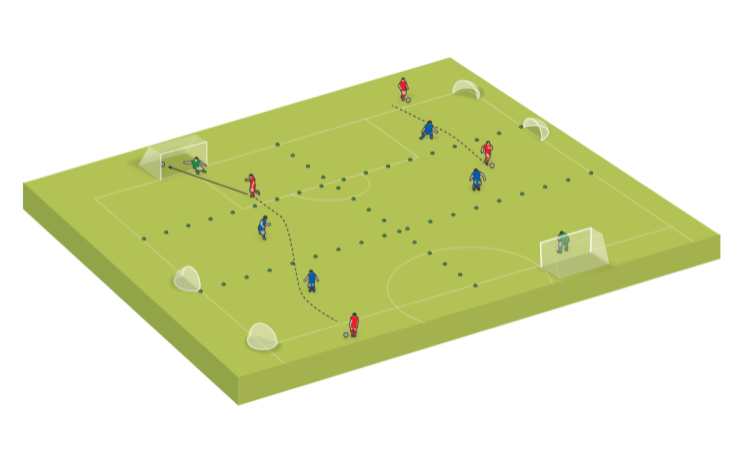Week 3: Create a match strategy
The basics have been taken care of with passing, possession and fitness, and there has been plenty of small-sided game-play thrown into the mix as well, but now you want to delve down into what your players are going to produce this coming season on the pitch.
Now you’re well into pre-season your players’ bodies can take more match-like work. But remember they will need plenty of water as they work harder particularly if the weather is hot. The basics have been taken care of with passing, possession, and fitness, and there has been plenty of small-sided game-play thrown into the mix as well, but now you want to delve down into what your players are going to produce this coming season on the pitch.
As your players become fitter, sharper and stronger you can sort out areas you want to cover like finishing skills, decision making, and reacting to transitions.
Player roles
The third training session should really see you visualising how players will fulfil their roles, and for that to happen you’ll need a clear indication of what is expected in each position. Use the table below to formulate the roles of your players, whilst assessing in which area players might need to improve:
| Position | Physical qualities required |
Technical qualities required |
Tactical qualities required |
Mental qualities required |
| Goalkeeper | Size, Agility Reactions Jumping skills Suppleness |
Safe hands, Good technique on the line and in the air Good skills with the feet |
Choice of positioning and movement Anticipation Good distribution |
Personality Confidence Calmness Concentration |
| Full-backs | Speed endurance Explosive speed |
Defensive technique Tackling and sliding Receiving Good-quality passing Running with the ball |
Positioning and repositioning Timing Versatility in attack |
Aggressiveness Willpower Confidence |
| Central defenders |
Height Power Jumping skills Speed, Mobility |
Intercepting Ball control Heading Long/short passing |
Anticipation Positioning, Marking Covering and support play |
Leadership Temperament Direction, Calmness Courage |
| Midfielders | Endurance Strength (in the duel) Mobility |
Defensive technique Passing Receiving Dribbling |
Positioning and repositioning Anticipation Pressing |
Fighting qualities Cooperation Willpower |
| Wingers | Endurance Speed |
Running with the ball Dribbling Crossing Shooting |
Moving to defend Moving to attack Pressing Winning duels |
Courage, Willpower Generosity of spirit Concentration Risk-taking |
| Strikers | Power Speed Liveliness Agility |
Finishing Control Heading Dribbling, Feinting |
Constant movement Changing of positions Runs into space Timing |
Confidence Opportunism Trickery Perseverance |
Passing and ball control
As with the previous weeks, a good warmup is essential. Then go through some passing drills followed by a ‘pass and move’ game, as outlined in the first two parts of this plan. These are the fundamental basics and should be incorporated into any training session. But from this point onwards we can be a little bit more ambitious. Practise some ball control games – a simple ‘throw and control’ between two players will do for starters.
Crossing and finishing
For the first team drill, try a ‘crossing and finishing’ challenge. Not only is the ability to get balls in from the wing a very important part of the game, but this doubles as a great conditioning tool too. And what’s more, any
practice that ends with an effort on goal will reinforce in your team the idea that training has a positive end product.
Start with four players in the final third – a midfielder, a winger and two forwards – plus a keeper in the goal. The midfielder plays out to the winger who, in one or two touches, crosses for the forwards.
Starting on the edge of the area, they now run in looking to finish in the goal.
As players get used to the process, progress it by adding in overlaps on the wing, or by introducing a defender – and always ensure you rotate positions so every player samples each role.
You can also use these two simple sessions to get your players crossing and finishing:
What half-time drinks or snacks are best for my players on match day?
Small-sided games
By the third session, you’ll also find that players’ fitness is building nicely. For a great pursuit that tests pace and finishing skill, give a player the ball 40 yards from goal, and tell him he has 10 seconds in which to find the net. This is extremely motivating, generates good banter and concentrates on skill.
Finish the session with a small-sided game, putting into practice everything the players have learnt, then a warm down.
PRE-SEASON TRAINING ESSENTIALS
No.4: You are what you eat -
Kids may not be renowned for having the best diets - they do not know how critical a good diet is to an athlete,
and a fair proportion don’t care. After all, this is football with their mates, so there’s no point making them conduct a health regime befitting of an Olympian.
But eating a proper diet during the season can be the difference between a starting position and sitting on the bench; or taking home a championship trophy and finishing second.
It can also be the deciding factor in close games. A poor diet can undo all the hard work that is done in training by preventing the body from recovering, adapting, and improving.
You should inform your players what is good to eat and what to avoid, offering guidelines for what and when
to eat before games and training.
Finally, identify the foods that, ideally, should be avoided, such as sweets, high fat and deep-fried food, and high sugar drinks. If players’ parents follow these guidelines for proper nutrition throughout the season, the rewards can be great!
Coaches Testimonials

Gerald Kearney, Downtown Las Vegas Soccer Club

Paul Butler, Florida, USA

Rick Shields, Springboro, USA

Tony Green, Pierrefonds Titans, Quebec, Canada
Pre-Season Training
Discover the simple way to become a more effective, more successful soccer coach
In a recent survey 89% of subscribers said Soccer Coach Weekly makes them more confident, 91% said Soccer Coach Weekly makes them a more effective coach and 93% said Soccer Coach Weekly makes them more inspired.
*includes 3 coaching manuals
Get Weekly Inspiration
All the latest techniques and approaches
Soccer Coach Weekly offers proven and easy to use soccer drills, coaching sessions, practice plans, small-sided games, warm-ups, training tips and advice.
We've been at the cutting edge of soccer coaching since we launched in 2007, creating resources for the grassroots youth coach, following best practice from around the world and insights from the professional game.
